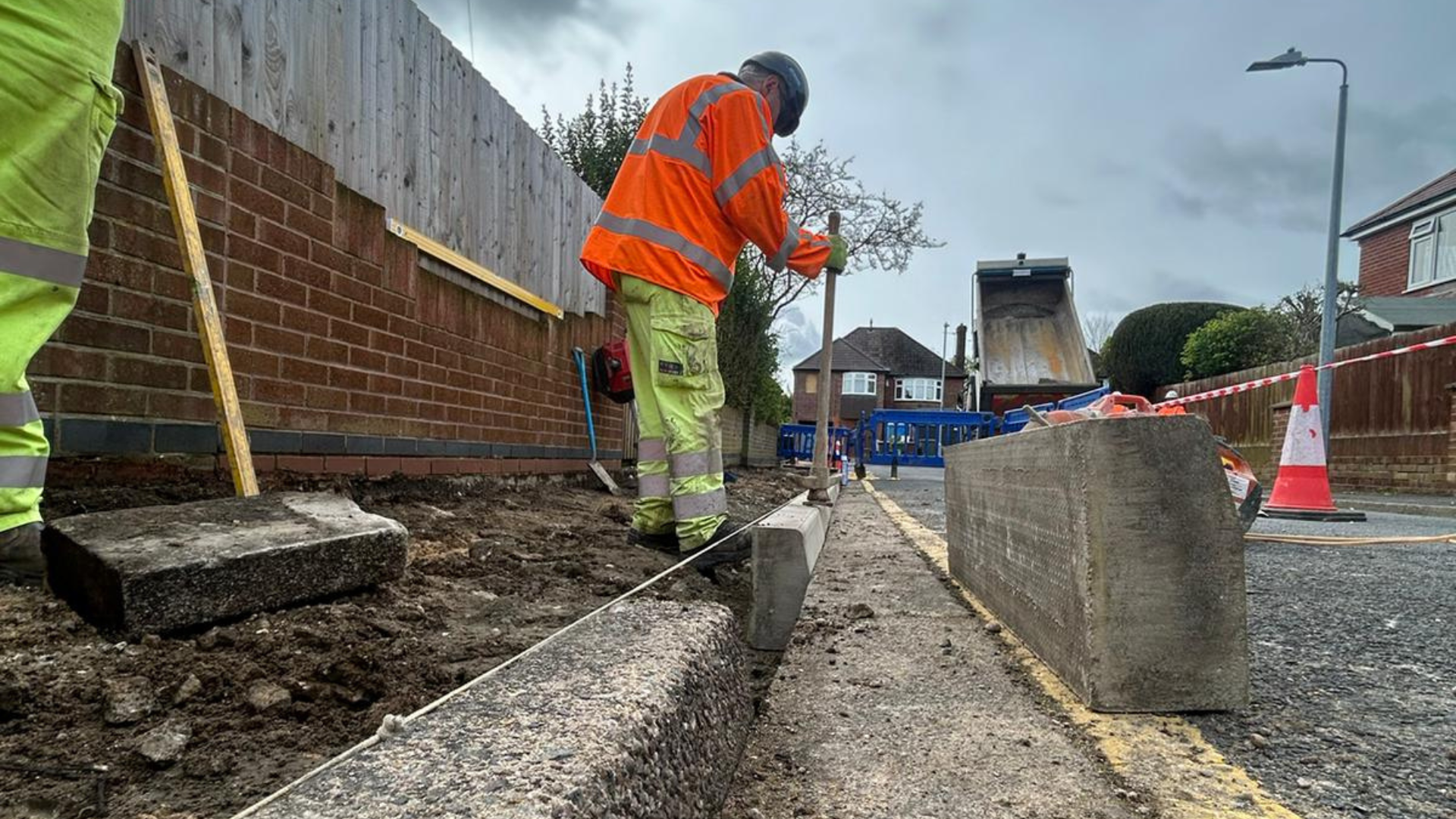
Lincolnshire County Council is responsible for maintaining 2,800 miles of footpath.
Cllr Richard Davies, executive member for highways, said: “Hundreds of thousands of people use our footpaths every year – from young to old, from residents to visitors.
“Not only do well-maintained footpaths provide a safe space for people to exercise, walk dogs and stroll with family and friends, but a good pathway really helps to encourage people to leave their cars at home and travel by foot instead.
“That’s why, as the highways authority, we work extremely hard to maintain the county’s footpaths. In fact, during the past five years, we’ve repaired over 2,400 footpaths throughout Lincolnshire – ranging from minor repairs to full reconstruction projects.”
Lincolnshire's footpaths... in numbers
- 2,800 miles of footpath looked after by Lincolnshire County Council – that’s enough to cover the entire length of the UK four and a half times!
- Over 75 miles of Lincolnshire footpaths were repaired in 2023
- 101 miles of footpath are expected to be fixed in 2024
- On average, 20,000 tonnes of material is used each year to repair the county’s footpaths
The circle of (footpath) life
A footpath’s life starts long before any surfacing touches the ground.
When the ground it’s being built on isn’t owned by the local highways authority, a very long legal and procurement process is often required to secure the land. Typically, site surveys are carried out and detailed plans are drawn up while this process is underway.
Once land has been procured and detailed plans are complete, the ground where the footpath is being built is excavated down by up to a foot. From there, kerbing and footway edgings are installed before three layers of materials are laid.
The first layer of a footpath is called the sub-base and is typically made up of crushed rock to facilitate drainage and provide a level surface. After this has been spread evenly, the next layer, called the binder course, is laid. This is a tarmac layer that holds everything in place. Finally, the top layer, known as the surface course, is put down – providing a smooth and durable walking surface.
Once the footpath is open for people to use, our local highways teams carry out maintenance at regular intervals. After roughly 40 years, a micro asphalt surface treatment is applied to the path to provide a new surface layer that seals the existing surface, extending its life. A second micro asphalt application is often considered roughly 55 years after a footpath is built.
During those 55 years, highways officers carry out inspections as part of their rota to tackle any defects they find. If needed, a standard footway repair – where there is a large crack or break in the paving – is a relatively simple fix. It is carried out by filling it the same way a pothole is repaired.
As the footpath’s surface deteriorates over 70 years, it would more than likely need to be fully resurfaced or completely rebuilt. If that’s the case, the life of that section of path comes full circle, back to design and construction.
Paving the way for innovation
Karen Cassar, assistant director – highways, said: “As part of our footway reconstruction programme, we’re now using cold recycled bound material, or CRBM – an unheated, more environmentally-friendly alternative to traditional asphalt.
“CRBM is made by crushing down old surface material from other road projects and recycling it into a new, usable material rather than hauling it off to landfill.
“This material is then treated within the county to bind it with foamed bitumen and other binders before being stored at Barrowby and Lincoln until we need it. The major perk of using CRBM is that it can be laid when it is cold rather than it having to be heated.”
Traditional hot-rolled asphalt needs to be heated to 190 degrees Celsius prior to being transported around the country to Lincolnshire’s road projects. This process alone accounted for 15% of its total cost. CRBM also only requires small equipment to machine-lay it, which increases productivity on-site by an estimated 20-30%, reducing the duration of the works.
Karen added: “Moving to cold material not only avoids extra energy consumption, but also reduces our carbon footprint and rapidly increasing industry costs. In fact, with CRBM being made up of 90% recycled road-building material, the switch to this type of material has led to as much as a 50% carbon saving on each project. It also provides a 95% reduction in the energy needed to make to make the material when compared to traditional asphalt.
“In 2022/23, we recycled roughly 40,000 tonnes of material back into our road network, including our footpaths. All of these benefits have led to us fully embracing this technology and always using CRBM where we can now.”
Faulty footpath? Tell us!
Cllr Richard Davies said: “It’s near impossible for our officers to know about every single fault on our 2,800-mile-long footpath network, so we encourage anyone who encounters an issue to make us aware by reporting it. You can do this via the Fix My Street app or at: www.lincolnshire.gov.uk/faultreporting.”
“Once we know there’s a problem, our officers can assess it, prioritise it, and develop a plan of action.”
For up-to-date information about roadworks throughout Lincolnshire, please visit www.lincolnshire.gov.uk/roadworks.
